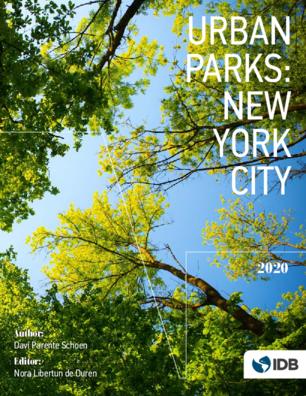Urban Parks: New York City
Date
May 2020
EDITOR
Libertun de Duren, Nora Ruth
New York City's success in providing high-quality, sustainable, ecologically productive and equity-promoting parks in recent years presents a number of important lessons for cities in Latin America and the Caribbean (LAC). This publication is a review of four innovative strategies that have emerged in New York City to add to and maintain the citys park portfolio and how can New York City serve as a useful case with lessons to consider for providing parks in LAC. Cities across LAC face mounting challenges in the provision of public green space. Currently, a majority of LAC cities fall short of providing the World Health Organizations recommended minimum of 9m2 of green space per resident. Residents in cities across the region also face barriers to accessing parks and many are of poor or declining quality. The underlining social economic inequality and spatial segregation in many LAC cities is also reflected in the uneven distribution of parks and other green spaces. For cities in the region, the challenge is one of quantity, quality, and spatial distribution. The political dynamics, institutional arrangements, financial mechanisms, design strategies, and maintenance programs that have proven critical to enabling NYCs recent innovations, therefore, bear a number of lessons for cities across LAC.




